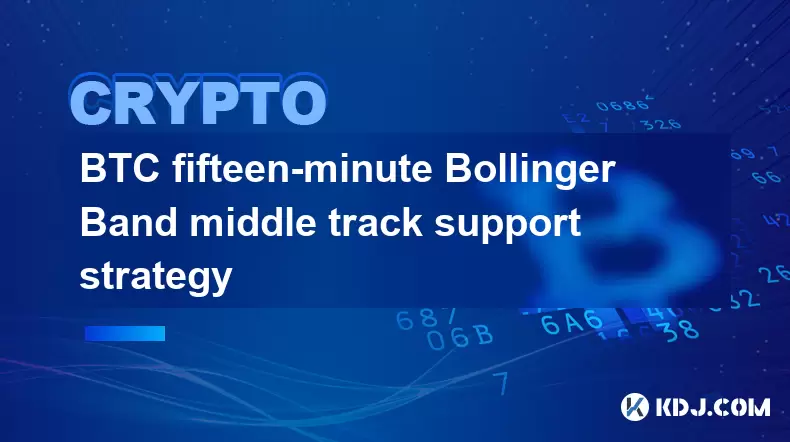-
 Bitcoin
Bitcoin $116600
0.45% -
 Ethereum
Ethereum $3902
1.46% -
 XRP
XRP $3.330
8.48% -
 Tether USDt
Tether USDt $1.000
0.02% -
 BNB
BNB $786.2
1.53% -
 Solana
Solana $176.5
2.61% -
 USDC
USDC $0.9998
0.00% -
 Dogecoin
Dogecoin $0.2219
3.89% -
 TRON
TRON $0.3390
-0.05% -
 Cardano
Cardano $0.7905
3.12% -
 Stellar
Stellar $0.4595
11.06% -
 Hyperliquid
Hyperliquid $41.14
5.28% -
 Sui
Sui $3.803
2.17% -
 Chainlink
Chainlink $19.28
11.13% -
 Bitcoin Cash
Bitcoin Cash $579.0
0.94% -
 Hedera
Hedera $0.2604
3.41% -
 Avalanche
Avalanche $23.30
2.76% -
 Ethena USDe
Ethena USDe $1.001
-0.03% -
 Litecoin
Litecoin $121.7
1.10% -
 UNUS SED LEO
UNUS SED LEO $8.983
0.36% -
 Toncoin
Toncoin $3.342
0.92% -
 Shiba Inu
Shiba Inu $0.00001287
1.98% -
 Uniswap
Uniswap $10.53
3.87% -
 Polkadot
Polkadot $3.882
2.79% -
 Dai
Dai $1.000
0.00% -
 Bitget Token
Bitget Token $4.471
1.77% -
 Cronos
Cronos $0.1517
2.88% -
 Monero
Monero $263.4
-4.80% -
 Pepe
Pepe $0.00001109
2.63% -
 Aave
Aave $282.5
2.95%
BTC fifteen-minute Bollinger Band middle track support strategy
The BTC fifteen-minute Bollinger Band middle track support strategy uses the 20-period SMA as a dynamic support level for potential buying opportunities in Bitcoin trading.
May 31, 2025 at 03:50 pm

Introduction to the BTC Fifteen-Minute Bollinger Band Middle Track Support Strategy
The BTC fifteen-minute Bollinger Band middle track support strategy is a technical analysis approach used by traders to identify potential buying opportunities in Bitcoin (BTC). This strategy focuses on the middle track of the Bollinger Bands, which is typically a 20-period moving average, and uses it as a support level. When the price of BTC touches or comes close to this middle track on a fifteen-minute chart, it can signal a potential buying opportunity. Understanding and applying this strategy requires a solid grasp of Bollinger Bands and how they interact with price movements on shorter time frames.
Understanding Bollinger Bands
Bollinger Bands are a popular technical analysis tool developed by John Bollinger. They consist of three lines: the middle band, which is a simple moving average (SMA), and two outer bands that are standard deviations away from the middle band. The standard settings for Bollinger Bands are a 20-period SMA for the middle band and two standard deviations for the upper and lower bands. These bands expand and contract based on market volatility, providing valuable insights into potential price movements.
Setting Up Bollinger Bands on a Fifteen-Minute Chart
To implement the BTC fifteen-minute Bollinger Band middle track support strategy, traders need to set up their charts correctly. Here's how to do it:
- Select the fifteen-minute time frame: This is crucial as the strategy is specifically designed for this time frame.
- Add Bollinger Bands to the chart: Most trading platforms allow you to add technical indicators easily. Look for Bollinger Bands in the list of available indicators and apply them to your chart.
- Adjust the settings: Ensure that the middle band is set to a 20-period SMA and the outer bands are set to two standard deviations. These are the standard settings, but you can experiment with different parameters if needed.
Identifying Support at the Middle Track
The core of the BTC fifteen-minute Bollinger Band middle track support strategy lies in identifying when the price of BTC touches or approaches the middle band. This middle band acts as a dynamic support level. Here's how to identify these opportunities:
- Monitor the price: Keep an eye on the fifteen-minute chart and watch for instances where the price of BTC touches or comes very close to the middle band.
- Look for confirmation: It's not enough for the price to simply touch the middle band. Look for additional signs of support, such as a bullish candlestick pattern or an increase in volume, which can confirm the potential for a price rebound.
Executing Trades Based on the Strategy
Once you've identified a potential support level at the middle band, it's time to execute a trade. Here are the steps to follow:
- Place a buy order: When the price of BTC touches or approaches the middle band and shows signs of support, place a buy order at the current market price or slightly above it.
- Set a stop-loss: To manage risk, set a stop-loss order below the middle band. A common approach is to place the stop-loss just below the recent low that occurred before the price touched the middle band.
- Determine a take-profit level: Decide on a target price for taking profits. This could be based on resistance levels, previous highs, or a specific percentage gain.
Monitoring and Managing the Trade
After entering a trade, it's crucial to monitor and manage it effectively. Here are some tips for doing so:
- Keep an eye on the price: Continue to monitor the fifteen-minute chart to see how the price behaves after your entry.
- Adjust the stop-loss: As the price moves in your favor, consider trailing the stop-loss to lock in profits and reduce potential losses.
- Exit the trade: When the price reaches your take-profit level or if the market conditions change, exit the trade. It's important to stick to your trading plan and not let emotions dictate your decisions.
Common Pitfalls and How to Avoid Them
While the BTC fifteen-minute Bollinger Band middle track support strategy can be effective, there are some common pitfalls to be aware of:
- Overtrading: It's easy to get caught up in the excitement of trading and enter too many trades. Stick to your strategy and only trade when the conditions are right.
- Ignoring market context: Don't just focus on the fifteen-minute chart. Consider the broader market context and other time frames to get a complete picture.
- Failing to manage risk: Always use stop-loss orders and manage your position sizes to protect your capital.
Frequently Asked Questions
Q: Can the BTC fifteen-minute Bollinger Band middle track support strategy be used for other cryptocurrencies?
A: Yes, this strategy can be applied to other cryptocurrencies as well. However, it's important to test the strategy on historical data for each specific cryptocurrency to ensure its effectiveness.
Q: How often should I check the fifteen-minute chart when using this strategy?
A: It's recommended to check the fifteen-minute chart regularly, at least every 15 minutes during active trading sessions. However, you can also set up alerts to notify you when the price touches the middle band.
Q: What other technical indicators can complement this strategy?
A: Other indicators that can complement the Bollinger Band middle track support strategy include the Relative Strength Index (RSI) for overbought/oversold conditions, the Moving Average Convergence Divergence (MACD) for trend confirmation, and volume indicators to gauge market strength.
Q: Is this strategy suitable for beginners?
A: While the strategy itself is straightforward, it requires a good understanding of technical analysis and risk management. Beginners should start with a demo account to practice and gain experience before using real money.
Disclaimer:info@kdj.com
The information provided is not trading advice. kdj.com does not assume any responsibility for any investments made based on the information provided in this article. Cryptocurrencies are highly volatile and it is highly recommended that you invest with caution after thorough research!
If you believe that the content used on this website infringes your copyright, please contact us immediately (info@kdj.com) and we will delete it promptly.
- Bitcoin in 2025: The Impossibility of Ownership?
- 2025-08-08 20:30:12
- ZORA's Ascent: Trading Volume Surges, Price Targets in Sight
- 2025-08-08 20:30:12
- Solana, Rollblock, and Crypto Gaming: Charting the Trends in 2025
- 2025-08-08 19:50:11
- BlockchainFX: The Crypto Presale Investors Can't Ignore
- 2025-08-08 19:10:12
- Pump.fun, Memecoins, Glass Full: Solana's Launchpad Wars Heat Up!
- 2025-08-08 18:50:12
- Crypto Market Heats Up: Altcoin Spree Drives Market Cap to $3.87T
- 2025-08-08 19:05:02
Related knowledge

Can the Bitcoin protocol be changed?
Aug 07,2025 at 01:16pm
Understanding the Bitcoin ProtocolThe Bitcoin protocol is the foundational set of rules that govern how the Bitcoin network operates. It defines every...

How are Bitcoin transactions verified?
Aug 08,2025 at 06:57am
Understanding Bitcoin Transaction VerificationBitcoin transactions are verified through a decentralized network of nodes and miners that ensure the le...

How does decentralization make Bitcoin secure?
Aug 08,2025 at 09:35am
Understanding Decentralization in BitcoinDecentralization is a foundational principle of Bitcoin's architecture and plays a critical role in its secur...

What are some common misconceptions about Bitcoin?
Aug 07,2025 at 07:22pm
Bitcoin is Just Like Regular MoneyA widespread misconception is that Bitcoin functions identically to traditional fiat currencies like the US dollar o...

What is the role of nodes in the Bitcoin network?
Aug 08,2025 at 04:14pm
Understanding the Function of Nodes in the Bitcoin NetworkNodes are fundamental components of the Bitcoin network, serving as the backbone that ensure...

Is Bitcoin a solution for inflation?
Aug 08,2025 at 04:57am
Understanding Inflation and Its Impact on Traditional CurrenciesInflation refers to the sustained increase in the price of goods and services over tim...

Can the Bitcoin protocol be changed?
Aug 07,2025 at 01:16pm
Understanding the Bitcoin ProtocolThe Bitcoin protocol is the foundational set of rules that govern how the Bitcoin network operates. It defines every...

How are Bitcoin transactions verified?
Aug 08,2025 at 06:57am
Understanding Bitcoin Transaction VerificationBitcoin transactions are verified through a decentralized network of nodes and miners that ensure the le...

How does decentralization make Bitcoin secure?
Aug 08,2025 at 09:35am
Understanding Decentralization in BitcoinDecentralization is a foundational principle of Bitcoin's architecture and plays a critical role in its secur...

What are some common misconceptions about Bitcoin?
Aug 07,2025 at 07:22pm
Bitcoin is Just Like Regular MoneyA widespread misconception is that Bitcoin functions identically to traditional fiat currencies like the US dollar o...

What is the role of nodes in the Bitcoin network?
Aug 08,2025 at 04:14pm
Understanding the Function of Nodes in the Bitcoin NetworkNodes are fundamental components of the Bitcoin network, serving as the backbone that ensure...

Is Bitcoin a solution for inflation?
Aug 08,2025 at 04:57am
Understanding Inflation and Its Impact on Traditional CurrenciesInflation refers to the sustained increase in the price of goods and services over tim...
See all articles

























































































